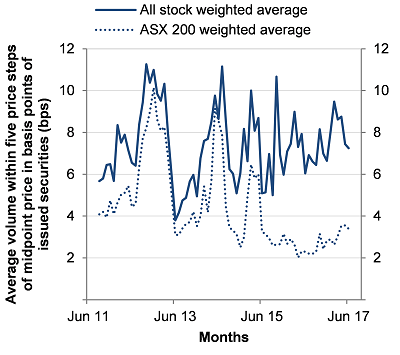Equity market data for quarter ending June 2017
For an explanation of the measures used in this release, see Information Sheet 177 Quarterly cash equity market data: Methodology and definitions (INFO 177).
Summary
Tables
Table 1: Market characteristics – average for June quarter
Table 2: Measures of market concentration
Table 3: Measures of market efficiency
Graphs
Figure 1: Market share – June quarter 2017
Figure 2: Australia – average daily turnover
Figure 3: Average trade size by execution venue
Figure 4: Dark liquidity proportion of total value traded
Figure 5: Order-to-trade ratio
Figure 6: Intraday trading profile – June quarter 2017
Figure 10: Effective bid–ask spreads
Figure 11: Quoted bid–ask spreads
Figure 12: Depth at five price steps as basis points of issued securities
Equity market data from other quarters
Summary of June quarter data
In the June 2017 quarter, the ASX accounted for 81% of the total dollar turnover in equity market products. Chi-X accounted for the remaining 19% of total dollar turnover. These figures include all trades executed on order book, as well as trades matched off order book and reported to either market operator. On order book turnover (excluding ASX auctions) as a proportion of total dollar turnover declined to 64.8% in the June quarter, from 66.0% in the March quarter. This was driven by a fall in the proportion of ASX on order book turnover by 1.3 percentage points (ppts) to 47.2% over the quarter. Trade reporting turnover as a proportion of total dollar turnover increased by 0.5 ppts to 18.6% over the quarter, due to rises in both ASX and Chi-X trade reporting turnover.
Turnover in the Australian equity market rose to its highest level in at least seven years at a daily average of $6.4 billion in the June quarter. This compares to a daily average of $5.8 billion in the March quarter and $5.7 billion in the June 2016 quarter.
The overall order-to-trade ratio declined further to its lowest level since the March 2011 quarter at 6.4:1. Chi-X’s order-to-trade ratio decreased to an average 8.2:1 and ASX’s ratio was unchanged at an average 5.7:1 in the June quarter.
The quoted bid-ask spread is also at a historically low level. For securities in the S&P/ASX 200 index, the weighted average spread fell by 0.7 basis points (bps) to 13.4 bps of the midpoint price over the quarter. For all securities, the weighted average spread decreased by 4.1 bps to 20.1 bps of the midpoint price.
Table 1: Market characteristics - average for June quarter
|
Statistics |
ASX on-order book |
ASX auctions |
ASX Centre Point |
ASX trade reporting |
Chi-X on-order book |
Chi-X trade reporting |
Total |
|
Number of trades per day |
921,091 |
35,873 |
141,253 |
18,220 |
383,115 |
60,647 |
1,560,201 |
|
(market share) |
59.0% |
2.3% |
9.1% |
1.2% |
24.6% |
3.9% |
100.0% |
|
Value traded, $ million/day |
3,007.8 |
1,057.1 |
447.2 |
672.5 |
671.4 |
512.8 |
6,368.7 |
|
(market share) |
47.2% |
16.6% |
7.0% |
10.6% |
10.5% |
8.1% |
100.0% |
|
Order-to-trade ratio |
5.7 |
na |
na |
na |
8.2 |
na |
6.4 |
|
Average trade size ($/trade) |
3,267 |
29,391 |
3,164 |
37,482 |
1,755 |
8,509 |
4,079 |
Table 2: Measures of market concentration
|
Statistics |
June |
April |
May |
June |
|
Total market Herfindahl index |
0.47 |
0.44 |
0.41 |
0.42 |
|
Public venues Herfindahl index |
0.68 |
0.64 |
0.63 |
0.65 |
Table 3: Measures of market efficiency
| Statistics |
June
2016
|
April
2017
|
May
2017 |
June
2017 |
|---|---|---|---|---|
|
Quoted bid-ask spread, bps |
23.9
14.4 |
21.9
13.9 |
19.4
13.1 |
19.0
13.1 |
| Effective bid-ask spread, bps - All stocks - S&P/ASX 200 stocks |
19.2
10.7
|
17.7
10.4 |
16.2
10.4 |
15.4
10.1 |
| Depth at best 5 price steps - all stocks, bps - All stocks - S&P/ASX 200 stocks |
6.0
2.3 |
8.8
3.5 |
7.4
3.6 |
7.2
3.4 |
Figure 1: Market share - June quarter 2017
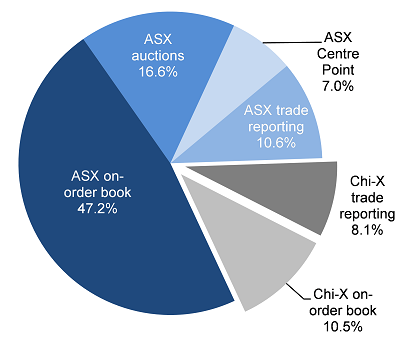
Figure 2: Australia - Average daily turnover
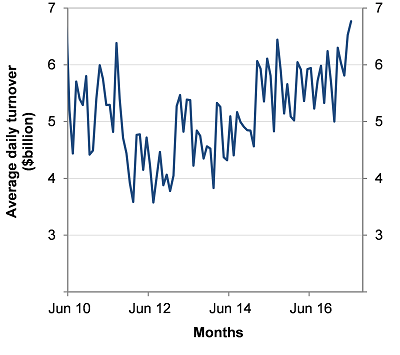
Figure 3: Average trade size by execution venue
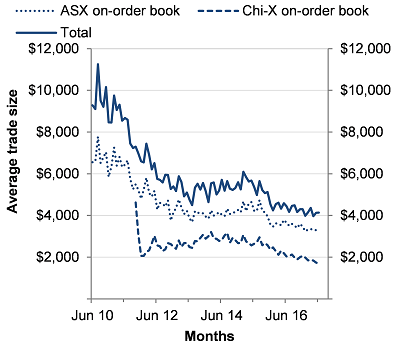
Figure 4: Dark liquidity proportion of total value traded
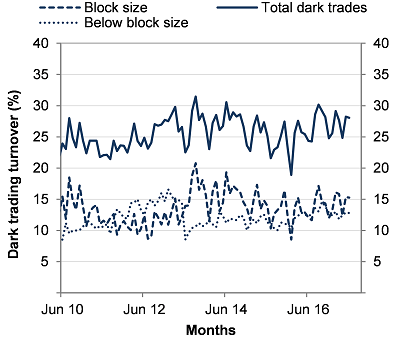
Figure 5: Order-to-trade ratio
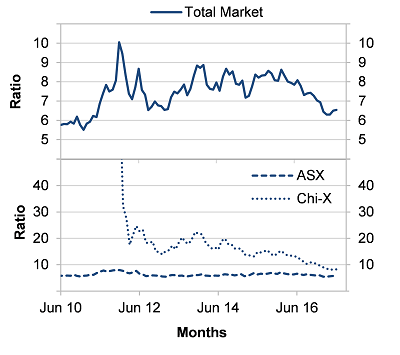
Figure 6: Intraday trading profile - June quarter 2017
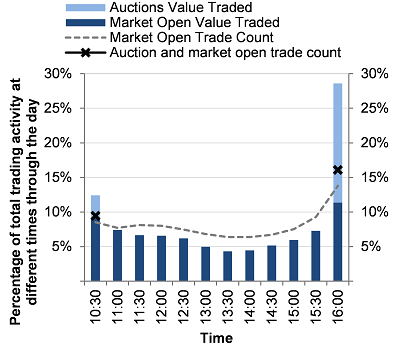
Figure 7: Intraday volatility

Figure 8: Interday volatility
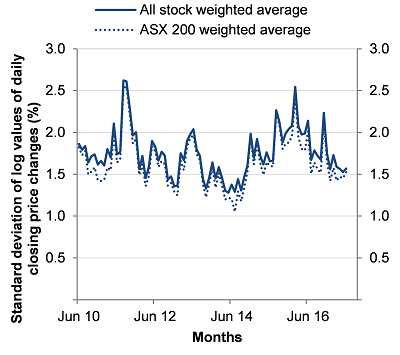
Figure 9: Herfindahl index
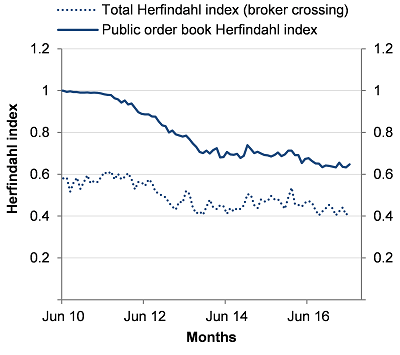
Figure 10: Effective bid-ask spreads
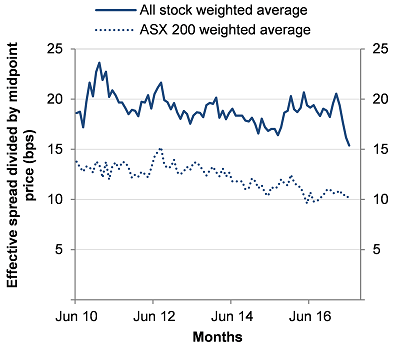
Figure 11: Quoted bid-ask spreads
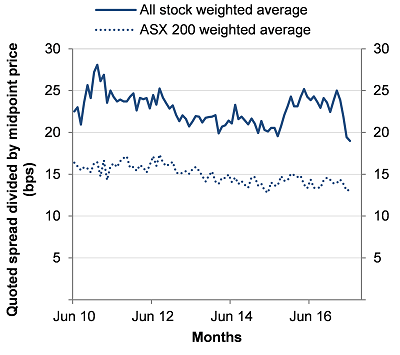
Figure 12: Depth at five price steps as basis points of issued securities
